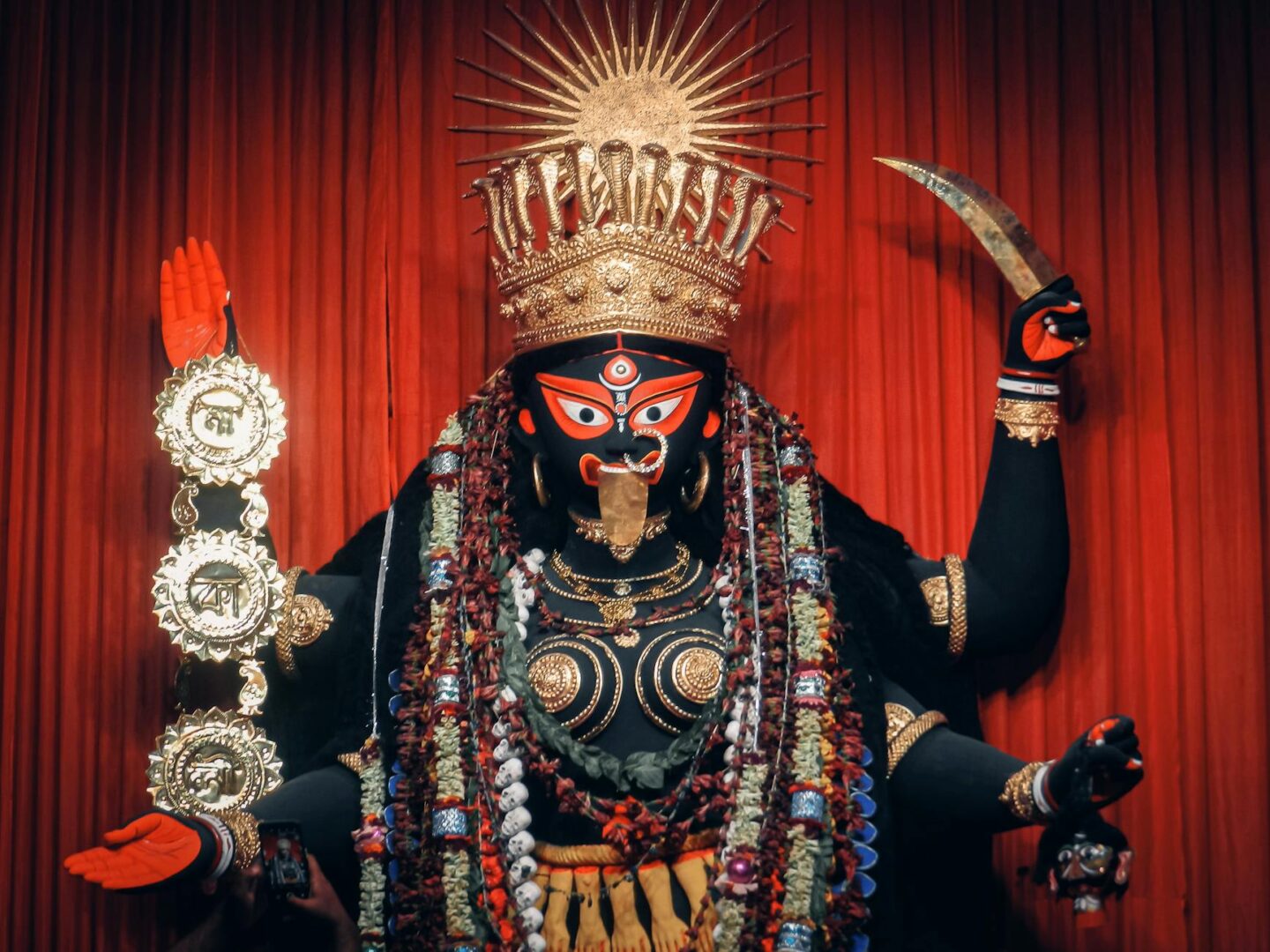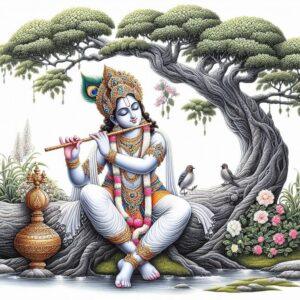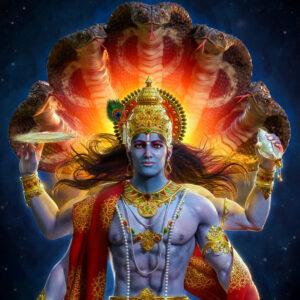
Introduction
Maa Kali, also known as Kalika, is one of the most powerful and revered goddesses in Hinduism. She represents the forceful and transformative aspects of Shakti, the divine feminine energy. The image of Maa Kali often evokes a sense of awe and reverence among her devotees. This article aims to provide an in-depth understanding of Maa Kali, exploring her origins, significance, worship practices, and more.
Who is Maa Kali?
Maa Kali is a formidable and complex deity, embodying both destructive and benevolent aspects. She is often depicted with a dark complexion, a garland of skulls, and a fierce expression. Despite her terrifying appearance, devotees revere her as a loving mother who offers protection from evil forces.
The Origins of Maa Kali
Mythological Background
Maa Kali’s origins are deeply rooted in Hindu mythology. According to one legend, she emerged from the forehead of Goddess Durga during a battle with the demon Mahishasura. Her primary role was to annihilate demons and restore cosmic balance.
Historical Context
The worship of Maa Kali can be traced back to ancient India, where she was venerated in various forms. Over centuries, her cult evolved, incorporating local traditions and customs.
Significance of Maa Kali in Hinduism
Role in Scriptures
Maa Kali is prominently featured in several Hindu scriptures, including the Devi Mahatmya and the Puranas. She is often invoked during crises to destroy evil forces and protect the righteous.
Symbolic Importance
Kali symbolizes time (Kala) and the inevitable cycle of creation and destruction. She teaches her followers to embrace change and transformation as essential aspects of life.
Iconography of Maa Kali
Depiction in Art
Artists have portrayed Maa Kali in various forms over centuries. Her most common depiction shows her standing on the chest of Lord Shiva, emphasizing her dominance over time and death.
Attributes and Symbols
Maa Kali’s iconography includes several symbolic elements: a sword representing knowledge, a severed head symbolizing ego destruction, and a garland of skulls denoting wisdom.
Stories and Legends of Maa Kali
Battle with Raktabija
One of the most famous legends involves Maa Kali’s battle with the demon Raktabija. Each drop of his blood that touched the ground produced another demon. To stop this, Kali drank his blood before it could reach the earth.
Slayer of Demons
In various other myths, Maa Kali is depicted as the slayer of numerous demons, including Chanda, Munda, and Shumbha-Nishumbha. These stories highlight her role as a fierce protector against evil.
Worship Practices
Puja Rituals
Worshipping Maa Kali involves elaborate rituals including offering flowers, fruits, and incense. Devotees chant mantras and sing hymns to invoke her blessings.
Festivals and Celebrations
Kali Puja is one of the most important festivals dedicated to Maa Kali. Celebrated primarily in West Bengal, it involves night-long vigils, intricate rituals, and community feasts.
Temples Dedicated to Maa Kali
Famous Temples in India
Several temples across India are dedicated to Maa Kali. The Dakshineswar Kali Temple in Kolkata and the Kalighat Temple are among the most renowned.
Significant Temples Around the World
Beyond India, temples dedicated to Maa Kali can be found in countries with significant Hindu populations, such as Nepal, Bangladesh, and even Trinidad.
Maa Kali in Modern Culture
Influence in Literature and Movies
Maa Kali has inspired numerous works of literature and films. Her complex character has been explored in various artistic forms, contributing to her enduring legacy.
Contemporary Worship Practices
In modern times, Maa Kali’s worship has adapted to contemporary contexts. Many devotees incorporate her teachings into daily life, seeking her guidance for personal transformation.
Maa Kali and Feminine Power
Maa Kali is often seen as an embodiment of feminine power. She represents independence, strength, and the ability to confront challenges head-on. Her fierce persona encourages women to break free from societal constraints.
Maa Kali’s Role in Personal Transformation
For many devotees, worshipping Maa Kali leads to profound personal transformation. She helps individuals confront their fears, overcome obstacles, and achieve spiritual growth.
Devotees’ Experiences and Testimonials
Numerous devotees have shared their transformative experiences after invoking Maa Kali’s blessings. These testimonials often highlight her protective nature and the profound impact she has on their lives.
How to Connect with Maa Kali Spiritually?
Connecting with Maa Kali spiritually involves regular meditation, chanting her mantras, and participating in rituals. Devotees also recommend reading scriptures that describe her exploits and teachings.
Common Misconceptions about Maa Kali
Despite her widespread veneration, there are several misconceptions about Maa Kali. Some view her as merely a destructive force, overlooking her nurturing aspects. It is essential to understand her multifaceted nature for a balanced perspective.
FAQs about Maa Kali
What is the significance of Maa Kali’s dark complexion?
Maa Kali’s dark complexion symbolizes the infinite nature of time and space. It also represents her transcendence beyond material attributes.
Why does Maa Kali have a garland of skulls?
The garland of skulls signifies wisdom and victory over death. Each skull represents a conquered ego or an illusion dispelled by divine knowledge.
How do devotees worship Maa Kali during festivals?
During festivals like Kali Puja, devotees engage in elaborate rituals including offerings, chants, and night-long vigils to honor Maa Kali.
What does Maa Kali represent?
Maa Kali represents time, change, power, creation, preservation, and destruction. She embodies both fierce compassion and ruthless justice.
Are there any specific mantras to invoke Maa Kali?
Yes, one of the most powerful mantras is “Om Krim Kalikaye Namah,” which is chanted to seek her blessings for protection and transformation.
Where can I find temples dedicated to Maa Kali?
Prominent temples dedicated to Maa Kali include Dakshineswar Temple in Kolkata and Kalighat Temple. Temples can also be found globally in countries like Nepal and Trinidad.
Conclusion
Maa Kali is an awe-inspiring deity embodying both fierce destruction and compassionate protection. Her worship offers profound spiritual benefits and personal transformation for her devotees. Understanding her multifaceted nature helps us appreciate her significance in Hinduism fully.


